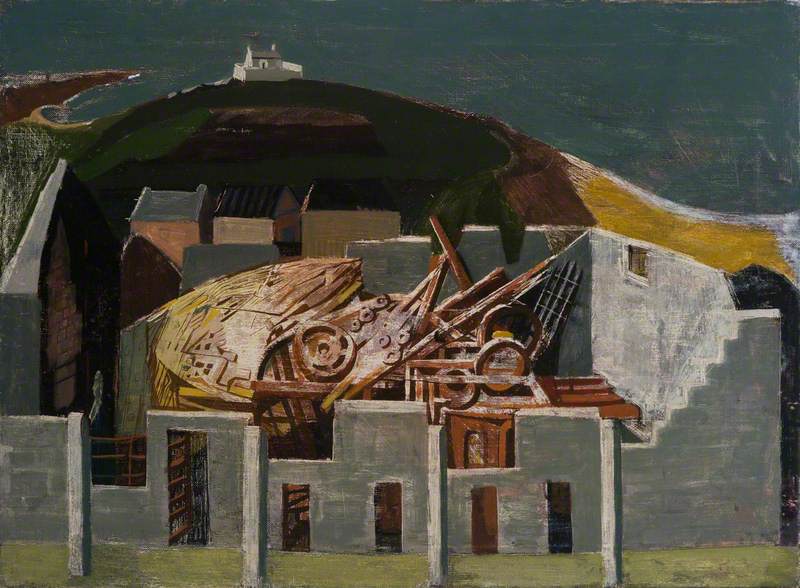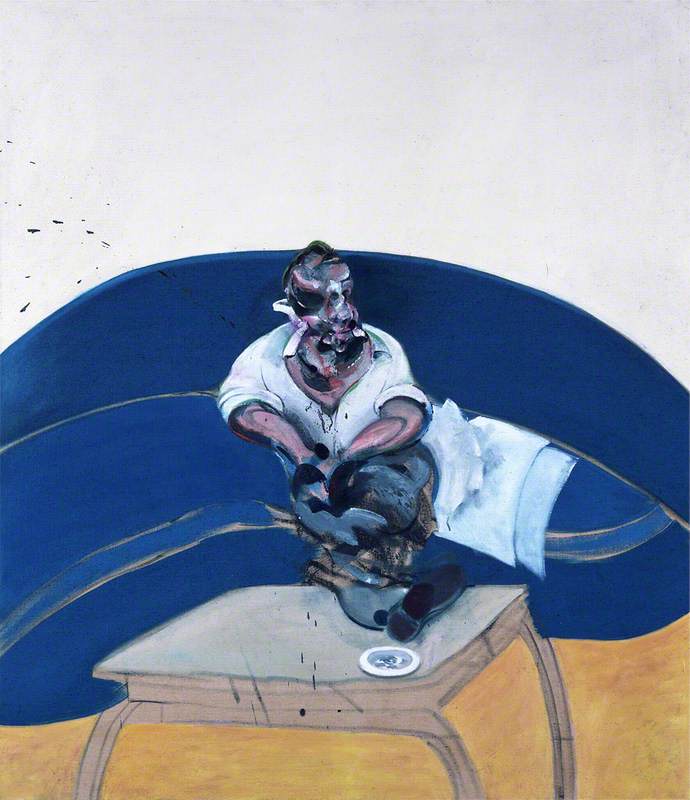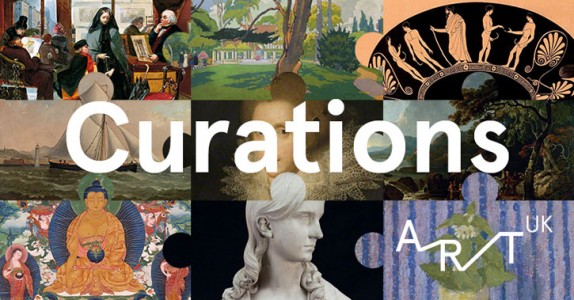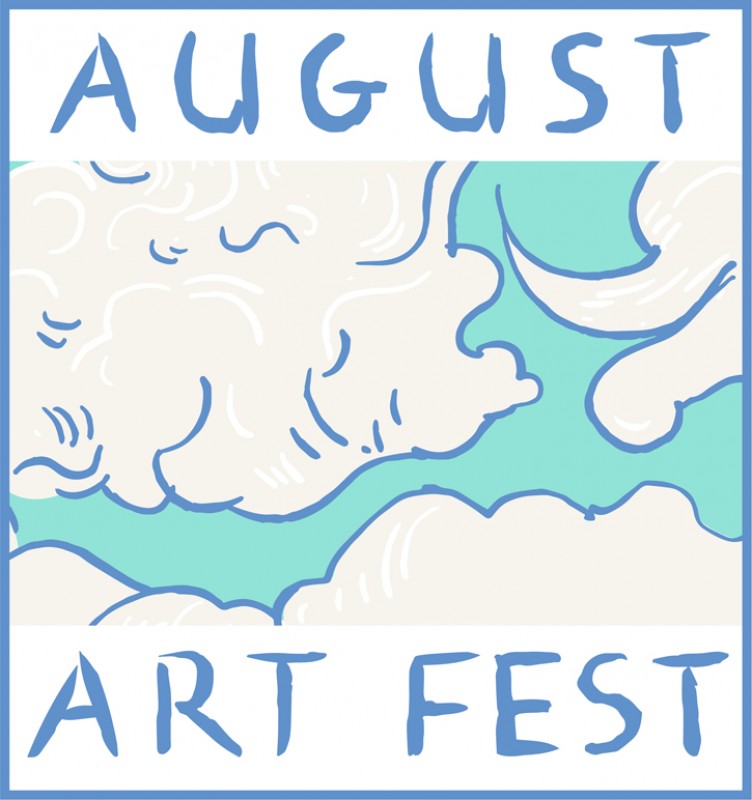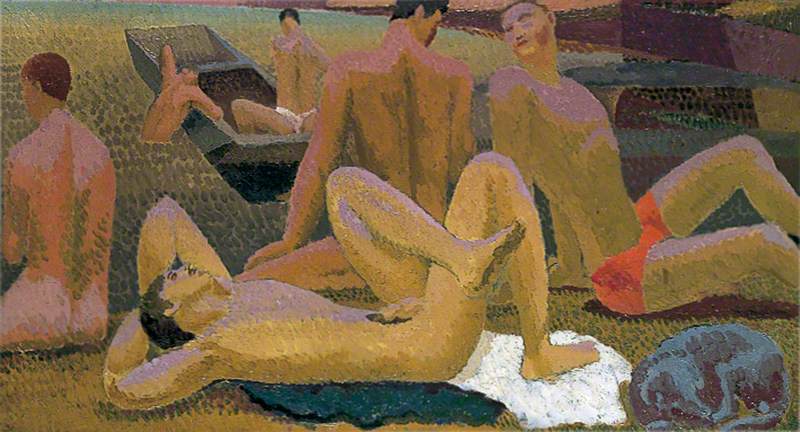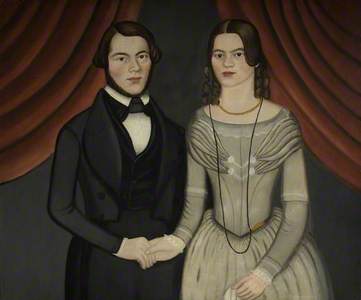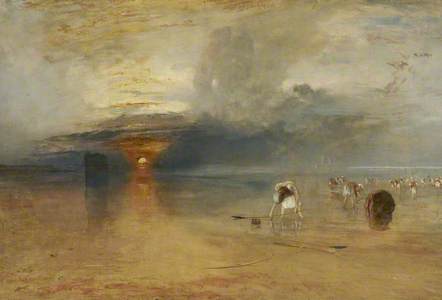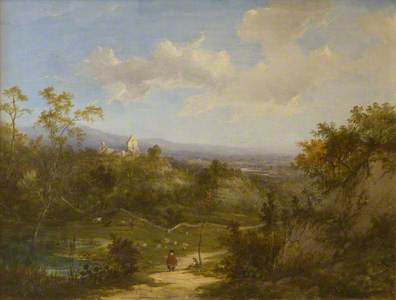Bloomberg Connects is a free app that lets you explore hundreds of arts venues across the globe. At Art UK we've been working with our collections to get them onto the app, to help people find out about hidden treasures – either during a visit or from the comfort of your own home!
Here are just ten things we've found from using the app.
The Atkinson, Southport
A current display called 'The Story So Far' (on until 2nd March 2024) at the Atkinson shows their Victorian works with those of the Harris in Preston.
John Collier's Lilith is one of the ones from the Merseyside collection, and it is based on the poem 'Eden Bower' by Dante Gabriel Rossetti – the noted Pre-Raphaelite painter and poet.
In the poem, Lilith and her snake lover are plotting evil in the Garden of Eden. In Jewish culture, Lilith is Adam's first wife, but she left Eden rather than being subservient to him.
She then takes revenge by becoming a snake herself, returning to Eden and making Adam and his new wife Eve eat the forbidden fruit.
Lilith knows it will make God angry and that the couple will be banished:
In thy sweet folds bind me and bend me,
And let me feel the shape thou shalt lend me.
In thy shape I'll go back to Eden;
(Alas the hour!)
In these coils that Tree will I grapple,
And stretch this crowned head forth by the apple.
'Lo, Eve bends to the breath of Lilith!'
American Museum & Gardens, Bath
As you open this guide within the Bloomberg Connects app, it poses the question: why is there an American museum on the outskirts of Bath? It's a good question!
The answer lies in the vision of life partners Dr Dallas Pratt and John Judkyn, who opened the museum and gardens in 1961 to showcase American decorative arts and dispel stereotypes of American culture.
As well as collections of maps, carvings and quilts, the Museum boasts a collection of folk art, and in particular portraits.
This double portrait of a newlywed couple is a great example of the genre. The population of the United States rapidly grew in the decades following the Revolution. Improvements in transportation had made far-flung towns more accessible to travellers, including itinerant portrait painters, who could rapidly produce a likeness.
These jobbing artists blocked composition in silhouettes of flat colour and built form with line rather than shodow. Outlines used to delineate curves were sliced into the drying paint. It was a quicker method than the academic tradition of building three-dimensional shapes from layers of translucent glazes. As such, these artists charged less for portraits, and the lower cost meant more people were able to preserve their likeness for posterity.
Folk art portraits have often been dismissed a 'bad art' because they are not true likenesses in the academic tradition, where precise mapping of physical attributes determines success. In folk portraits, physical resemblance often bows before an expressive sense of the sitter's personality.
Brontë Parsonage Museum
You may have heard of the Brontë sisters – Charlotte, Anne and Emily – respectively the authors of Jane Eyre, The Tenant of Wildfell Hall and Wuthering Heights... But have you heard about their brother Branwell?
He was not a writer but an artist, and his works are in the collection of the Brontë Parsonage Museum!
This portrait is of Branwell Brontë's friend John Brown, who worked as a stonemason and as sexton of Haworth Parish Church. It dates from the period when Branwell was a student of art in Bradford, as well as having his own portrait studio there. It comes complete with a stormy background sky, which wouldn't look out of place in one of his sisters' novels.
Bury Art Museum
As the guide loads for Bury Art Museum in Lancashire, it makes mention of how the collection came to be. The founding Wrigley Collection was given to the the town of Bury in 1897.
The image you see here is by one of the most famous of all English painters, J. M. W. Turner.

Image credit: Bury Art Museum
Calais Sands at Low Water: Poissards Collecting Bait 1830
Joseph Mallord William Turner (1775–1851)
Bury Art MuseumHis Calais Sands at Low Water: Poissards Collecting Bait is an extraordinary painting – and probably the finest and most important picture in the entire collection at Bury.
It was shown at the Royal Academy in 1830. At one level the picture is a view of Calais with a number of recognisable elements. At another level it is a scene from everyday life with fisherwomen busy gathering bait on the beach in order to bait the lines for the next day's fishing.
However, both of these pale into insignificance in comparison to the real subject, which is the spectacular sunset that dominates about half of the picture surface and illuminates the limitless expanse of sand, water and sky, creating long shimmering reflections and subtle blends of colour.
Danum Museum & Gallery (Doncaster)
Danum Museum & Gallery in Doncaster has around 2,000 items in its permanent collection, including many images reflecting Doncaster's importance as a centre of racing. There are also portraits by Joseph Wright of Derby, and works by important nineteenth- and twentieth-century artists, including William Etty, Lawrence Alma-Tadema, Edward Burne-Jones, Henry Moore, Laura Knight and Eduardo Paolozzi.
However, the first work acquired by the gallery was Low Tide by Miss E. M. Wilde.
Doncaster Corporation purchased it from the Summer Exhibition of Modern Art held at Beechfield Museum in 1912. As far as we know, it's the only work by her in a UK public collection.
Manx National Heritage
You may know a few things about the Isle of Man – the TT races, its use as an internment base for 'enemy aliens' during the First World War, its importance to shipping and fishing – but it's also a place of great natural beauty.
Perhaps the island's greatest artist is John Miller Nicholson. He spent most of his life living and working in Douglas obsessively recording the world and people around him with detailed skethces. His self-effacing and non-commercial attitude meant that his work is little known outside the island today.
Following his death, all of Nicholson's studio collection of artworks were purchased and donated to the Manx Museum.
The work by Nicholson shows the liveliness of Douglas Promenade, which is now home to a statue of the Bee Gees!
For more information about their guide, Manx National Heritage recently talked to the BBC about joining Bloomberg Connects.
Shrewsbury Museum & Art Gallery and Ludlow Library & Museum Resource Centre
This painting in the collection of Ludlow Library & Museum Resource Centre shows Robert Luther of Acton, Lydbury North. He was a farmer with over a thousand acres, and as you can see, was also a keen huntsman.

Image credit: Ludlow Library & Museum Resource Centre
William Roos (1808–1878)
Ludlow Library & Museum Resource CentreHe became owner of the United Hunt pack in 1849 and in 30 years only missed two meetings. Fox hunting was popular among the landed gentry, and was a key part of Shropshire's social scene. The painting feels very 'of its time', as hunting with dogs has been banned in England since 2005.
Going back to the painting, interestingly we know the names of all the dogs depicted! They are – left to right – Lapwing, Royal, Plato (back), Tuner (front), Blue Bonnet, Priam, Lofty, Sponsor, Bumper and Soundwell.
University of Dundee Museums
Dundee has been in the news in recent years as the site of the new V&A Dundee, but the university has an exceptional collection of fine art that includes paintings, drawings, prints and sculptures. The main focus is Scottish art from the nineteenth century onwards, with works by the likes of Henry Raeburn, David Wilkie, the Glasgow Boys, the Scottish Colourists, Joan Eardley, Albrto Morocco, Elizabeth Blackadder, Ian Hamilton Finlay and Wilhelmina Barns-Graham.
However, this artwork dates to the nineteenth century.

Image credit: University of Dundee Fine Art Collections
Kincardine Castle, Perthshire 1845
Charlotte Nasmyth (1804–1884)
University of Dundee Fine Art CollectionsThe work is by Charlotte Nasmyth. Relatively few women succeeded as professional painters in the male-dominated art world of the nineteenth century. Charlotte was certainly helped by the fact that her father, Alexander, was one of the most famous landscape painters in Scotland. Six of his eleven children went to work as professional artists, but Charlotte was probably the most prolific.
Wilhelmina Barns-Graham Trust
Wilhelmina Barns-Graham was a leading member of the St Ives group of artists and made an outstanding contribution to the advancement of post-war British art. The Wilhelmina Barns-Graham Trust was established in 1987 to secure her life's work and archive for the future. The Trust cares for, lends and tours the work of Barns-Graham to museums and galleries in the UK and beyond. The Bloomberg Connects guide lets you explore her remarkable art and life any time, from anywhere.
Many of Barns-Graham's later works are abstract in nature. This work dates from 1948 and represents a major step forward in her practice following the Second World War. Based on an actual incident, the painting sees the artist moving away from the simple recording of what she sees towards more considered and imaginative compositions. Box Factory Fire particularly emphasises the abstract qualities of what she has observed, suggesting the path she would take into abstraction over the following decades.
The Women's Art Collection, Cambridge
Did you know that a Cambridge college is the home to a dedicated collection of art by women? Head to Murray Edwards College to discover The Women's Art Collection – the largest collection of art by women in Europe.
The college was originally founded as New Hall in 1954 for women students at Cambridge University at a time when Cambridge had the lowest proportion of women undergraduates of any university in the UK.
The collection has evolved through gifts and loans from artists and alumnae since 1986 – the painting above, for example, was a gift from the Swedish artist Monica Sjöö. It is a growing body of over 600 works of varying media and is of international, national and regional interest enabling audiences to trace movements over more than 50 years, a period during which women have achieved unprecedented prominence in the visual arts.

© the artist. Image credit: The Women’s Art Collection
In Spinster Salt's Collection (from the Wing Museum series) 1989
Lubaina Himid (b.1954)
The Women’s Art CollectionThis work is by Turner Prize winner Lubaina Himid. It features an anciet Egyptian mirror and a pair of sistra instruments used in dance and religious ceremonies in the worship of the goddess Hathor. The painting was part of a series created for Himid's solo exhibition at Chisenhale Gallery in 1989 titled 'The Ballad of the Wing'.
The exhibition was intended as both a homage to Black creativity and a critique of the way Western museums treat and display African artefacts.
In a text acompanying the exhibition Himid described the legend of the Wing: 'The Wing witnesses events and records the creativity of the people, the museum does not.'
Download the Bloomberg Connects app
The Bloomberg Connects app is free to download from the App Store or Google Play. Download it today and start exploring more art and culture – any time, anywhere!
Andrew Shore, Director of Content at Art UK






